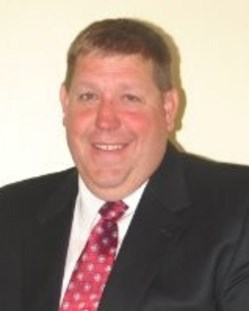A Centralized Approach and Actionable Data are Driving Results at Intermountain Healthcare
LISTEN TIME | 6:05
Intermountain Healthcare is an integrated, not-for-profit health system headquartered in Salt Lake City, Utah, with a focus on providing high-quality care that is accessible and affordable to all. They operate 215 clinics; 24 hospitals (includes virtual hospital); and telehealth services across a six-state area, with 3,800 affiliated physicians. Jon Hickenlooper, Operations Consultant-Patient Flow, shares how Intermountain Healthcare uses their commitment to patient flow strategies—and the data generated by TeleTracking SynapseIQ®—to ensure patients receive the right care at the right time.

What You’ll Learn in Today’s Episode:
-
It doesn’t matter where you are when you make the commitment to a patient flow strategy—it’s about the fluidity of process management—and being ready to adjust and evolve with changing business needs.
-
Intermountain’s evolution includes a centralized approach to patient placement and bringing their transfer center in-house.
-
SynapseIQ has made it possible to have access to actionable data, identify areas for improvement and then implement targeted plans. The data also makes it possible for the team to identify areas where things are working well and where they are surpassing best practices.
-
The combination of a centralized approach and actionable data is an important component of their virtual hospital, which makes it possible for hospitalists to assess patients remotely. For example, because the team in patient placement was able to provide a clear picture of the number of available beds on a recent day, the hospitalists were able to get 15-20 patients out of the emergency department and into a bed where they could start to receive treatment.
More about this episode
About the Expert
 Jon Hickenlooper
Jon Hickenlooper
Operations Consultant - Patient Flow
intermountain healthcare
Jon Hickenlooper, Operations Consultant-Patient Flow at Intermountain Healthcare in Salt Lake City, UT is responsible for coordinating and consulting on patient flow projects—including taking the lead on effectively using TeleTracking solutions. Jon also assists with creating processes to maximize transport, environmental services and bed placement efficiency—and consequently improve patient care. In addition, Jon is responsible for building reporting capabilities for the patent flow implementation team.
View Transcript
Welcome to the Patient Flow Podcast powered by TeleTracking.
On today's episode, we talk with Jon Hickenlooper. An operations consultant for patient flow at Intermountain Healthcare in the greater Salt Lake City, Utah area. Intermountain is a 24 hospital system with more than 30,000 employees. Jon spoke with us at TeleCon19 about using TeleTracking to study metrics and identify challenges within their organization. He explains that it doesn't matter where you are when you make the commitment to patient flow strategy, it's about the fluidity of process management. Being r3ady to pivot and adjust and evolve along with the changing business needs. For example, some current priorities for intermountain are patient transfers, hospital bed placement, request for consultation, life-flight coordination and connections to telehealth.
Jon: I mean our focus really has been stabilizing and bringing things back together. So initially, when we implemented TeleTracking, we implemented it with a patient placement office in each one of the hospitals. Then we went to a region. We narrowed that down from ten down to four. And then now, it is all centralized. We're still going through some growing pains trying to get hospitals back on track where they should be, as far as processes and whatnot. We also had decided to outsource our transfer center at one point in time. We only got two of the regions basically outsourced. We still had the other inside done by our patient placement office. We realized that was not going to work. So what we did is, we turned around and we brought it back in-house as of May. We're still trying to stabilize and get things squared away. One success on that note is, we have heard back from numerous physicians, "Thank you for bringing it back in-house." Because they've recognized that our staff was able to do things better. So we're getting buy off just by good reputation, which is helping.
It's not where we want it. We have, and this is the continuous improvement side of me, a long way to go. But we have to take those little wins as we can.
I can tell you with Synapse, leadership loves to look at those reports, even staff. Intermountain has this way of thinking that they'll take all of their data and figure different things out. Because of that, we've been able to take and look at our data and say, "Okay, this is how we can better serve our patients." For example, I know that with the EDW folks that we have now, they are able to pull so much data that they can help identify direct patient relationships. As far as this patient has this disease, we're going to fix it with this protocol. They've done that pinpoint precision... care.
One thing I better tell you about TeleTracking that we've used TeleTracking with. So we have this, what we call a virtual hospital. Our virtual hospital includes our transfer center, patient placement office, TeleCritical care group that monitors all of our ICU beds, as well as other facilities that are not Intermountain, we do some of that. We have telehospitalists who actually admit to hospitals without having to get the hospitalist off the floor to go down and look at the patient in the ED or whatnot. So they'll do it directly from this office.
And then we have a TeleCrisis where you can have a crisis worker in this office, do a crisis evaluation with the patient in a rural ED or anywhere. If the crisis worker is busy and they can't do them, this patient's really in crisis, needs this, they can do the crisis evaluation. Anyway, that's part of this whole hospital.
The one really exciting thing that we saw is that one day, one of our hospitals got so slammed in the ED. Also, the hospitalist couldn't come down. He was so slammed up on the floor doing their work. So they called in and our hospitalist in this virtual hospital worked with our patient placement office. He actually stayed after work for a couple of hours. Between him and the new hospitalists that came on, they admitted about 15, I think it was 15 or 20 patients. Quickly, efficiently got the patients out of the ED, up on the floor, and had everything started for them. And then the hospitalist up on the floor just had to follow up. And assumed care at that point. But because we had TeleTracking, we knew where we could put them. And that the two were so closely located, that they could actually talk about, "Okay, we got a bed here." "Great." "We've got a bed here." "Fine." Finding the best place for the patient. Just because we had the two proximity of the teams, we had the technology, it worked out great.
This is the Patient Flow Podcast powered by TeleTracking. Your source for insightful conversations by industry leaders making a difference in patient flow today.
We're glad you're enjoying our resources! Please tell us more about you to access our full library.
This will allow us to personalize your experience on TeleTracking.com. Of course, we will never sell your information and you can opt-out at any time. Need help now? Contact a Patient Flow expert.
Leaving the website
You're about to leave this website, to one of our affiliates or another information source.